Showing 361–370 of 384 results

This book contains articles that examine the contribution of women saints from India and abroad and discuss the origin of bhakti, the Bhakti Movement, theris, and bhakti/saint poetesses. Their contribution constitutes a rich tradition of devotional discourse in terms of form as well as content.
This volume comprises articles that examine the contribution of women saints from India and abroad as well. The articles discuss the origin of bhakti, the Bhakti Movement, and bhakti/saint poetesses like Rishika Gargi, theris, Andal, Lal Ded, Akka Mahadevi, Mirabai, Gangasati, Tarigonda Vengamamba, Janabai, Bahinabai, Madhabi Dasi, Hildegard of Bingen, and Julian of Norwich from different regions and religions. Their contribution constitutes a rich tradition of devotional discourse in terms of form as well as content and has survived till now in folk and learned traditions. The articles discuss their voices, visions and sufferings physical and psychological and also the way they transcended them and voiced them in their compositions. Their uniqueness lies in their existence at multiple levels social, poetic, religious and spiritual among others. The volume would interest literary, cultural historians and religious scholars as well as general readers.
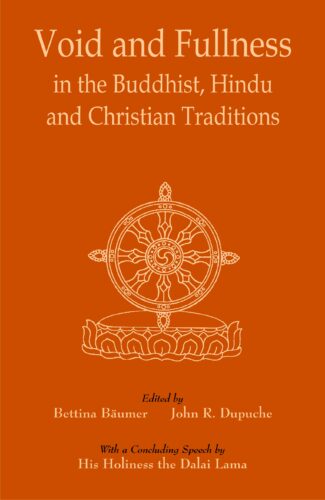
Interreligious dialogue is one of the important ways for overcoming cultural and religious differences and misunderstandings. But it has to reach the depths of the spiritual, philosophical and theological insights of the religious traditions. This volume throws light on concepts of Void (sunya) and Fullness (purna, in Greek pleroma) in the Buddhist, Hindu and Christian traditions.
Interreligious dialogue is one of the important ways for overcoming cultural and religious differences and misunderstandings, and for contributing to world peace. But such a dialogue has to go beyond the social, institutional and purely academic areas: it has to reach the very depths of the spiritual, philosophical and theological insights of the religious traditions. In Buddhism, Hinduism and Christianity such insights are expressed in the apparently opposite, but in reality complementary concepts of Void (shunya) and Fullness (purna, in Greek pleroma). These concepts lead to the respective spiritual experiences and their interpretations in scriptures and philosophies. This volume contains the papers presented at an interreligious seminar at Sarnath, Varanasi, organised by the Abhishiktananda Society, and inspired by the ideas and life of Swami Abhishiktananda (1910-1973). These papers throw light on these fundamental concepts from the different traditions, and are an invitation to dialogue. H.H. the Dalai Lama gave the concluding speech on the importance of interreligious dialogue.
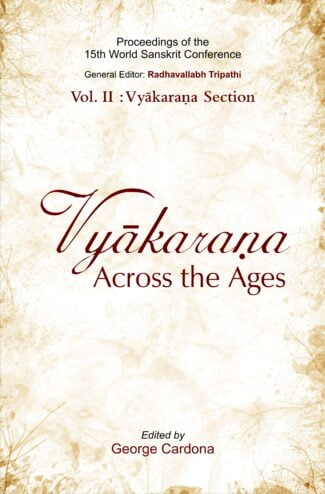
Covering the papers presented during the 15th World Sanskrit Conference, this book deals with Sanskrit grammatical treatises such as Eropean traditions of Sanskrit grammers; relations between terms and their meaning; the derivation of nominal forms in the Sàrasvata system; and the realm of modern Sanskrit literature, among others.
Sanskrit grammatical treatises, not only those of Panini and his successors but also work by Indian scholars representing other streams of grammatical thought, have long held the attention of modern scholars. The present volume contains a selection of the large number of papers presented in the Vyakarana Section of the 15th World Sanskrit Conference held in New Delhi, during 15-20 January 2012.
The scope covered in these papers is wide. The first contribution deals with currents in European traditions of Sanskrit grammars, from early works by missionaries to modern Sanskrit grammars. As could be expected, however, Panini is the centre of attention for most authors, whose contributions nevertheless differ in focus. Several scholars deal with theoretical issues concerning the interpretation and application of Paninian sutras, including points of Sanskrit syntax. The question whether particles (nipata), and preverbs (upasarga) in particular, should be considered independently to signify particular meanings or instead be treated as terms which serve to cosignify meanings assigned to items with which they co-occur is the object of two studies.
One paper treats in detail the relations which can be considered to hold between terms and the meanings they signify, with particular emphasis on what Bhartrihari has to say on this topic. A historically-oriented study deals with attacks on Paninian views by Mimamsakas of Prabhakara Naiyayikas. One scholar contrasts how particular nominal forms are derived in the Sarasvata system in contrast to the Paninian derivations of such forms. The final study in this collection brings us into the realm of modern Sanskrit literature, with a discussion of usage in the prose work Shivarajavijaya of Ambika Dutt Vyas.
Fellow scholars should welcome and profit from the varied studies contained in this volume.
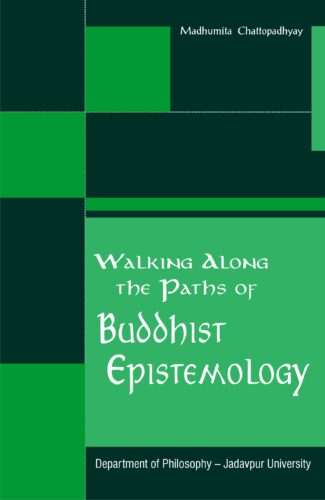
This is a book on Buddhist epistemology dealing with different epistemological topics like the nature of knowledge, validity of knowledge, knowledge of knowledge, perception, erroneous perception, among others. The author has referred to different Sanskrit texts and literature available on these topics.
The monograph highlights the philosophical arguments offered by Buddhist thinkers on different aspects of knowledge. Various aspects of Buddhist epistemology right from the basic question of what the Buddhists mean by knowledge, the varieties of knowledge according to their belief and their explanations of the validity of knowledge are examined. A painstaking work of Prof. Madhumita Chattopadhyay, this study deals with different epistemological topics like the nature of knowledge, validity of knowledge, knowledge of knowledge, perception, erroneous perception, inference and its related issues like ascertainment of vyapti, antarvyapti, prasanganuman and fallacies of inference. The author has referred to many primary sources which include different Sanskrit texts as well as the latest secondary literature available on these topics and discusses the important role of concept of absence and the theory of apoha or negative nominalism as a substitute for universals in Buddhist metaphysics. An attempt is made to explore whether solutions to modern epistemo-logical problems as found in the Western tradition can be provided from the Buddhist perspective in order to show that Buddhist epistemology has a relevant role to play in the area of epistemology itself. The book would interest scholars and students interested in the epistemological and logical aspects of Buddhist philosophy.

It is a comprehensive study of the defence policies, construction of forts, arms and ammunitions, commissariat, the espionage system, the rules of aggression and defence, the technical matters and war ethics, based upon a comparative study with the modern systems, and a thorough comprehension of Sanskrit, Sanskrit sources, and works like Silappadikaram, and Kural.
Differing from the existing studies on the warfare of ancient India; Warfare in Ancient India: In Historical Outline is a comprehensive study of the defence policies, construction of forts, arms and ammunitions, commissariat, the espionage system, the rules of aggression and defence, the technical matters and war ethics, based upon a thorough comprehension of Sanskrit and Sanskritic sources. This being done based on the existing and newly-explored sources. It also analyses the diplomatic and economic factors in aggressive designs, one of the major elements of the political history of early India.
This volume partially deals with the activities of the Indo-Aryans and their continuous struggle for survival against hostile environment in Indus Valley and their expansion towards the east along the major rivers of north India, leading to frequent invasions and attacks. Thus came the warlike traits of some major Vedic deities, ancient battles, arms and armour, chariots, forts, arrays, Jain war canons, and major weapons cited in the Mahabharata, Silappadikaram, Manasollasa, Kural, etc. as the main focus of the book. It also vividly addresses the war policies and tactics enunciated by Kautilya in Arthasastra and Manu in Manu-Smriti, and differentiations in their views on few aspects. The inevitable factors that led to wars survival, and domination and economic exploitation are also well dealt.
The book should enthuse the interests and spirit of all those who are into the study and research of history, warfare and ancient Indian culture mainly from the Vedic viewpoint.
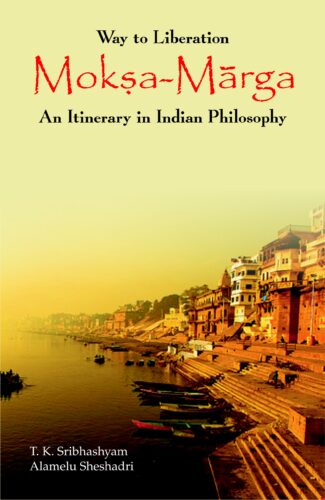
The book projects light on concept of contemplation and meditation, including meditation techniques and practices, which is central to the attainment of moksha. It also explains meaning of love, devotion, religion, the body-soul relation and the three yogas understanding of which is essential to attain moksha.
The way to liberation or moksha needs perfect knowledge, perfect action and perfect surrender to the Lord. The bhakta becomes a bhagavata as he not only knows and sees but also lives as a servant of God. Moksha is the final approach to the purity and perfection of the human soul. This volume attempts an in-depth study of the concept of liberation or moksha and the way to attain it.
The book begins with the meaning of love, devotion, religion, the body-soul relation and the three yogas, an understanding of which is essential to understand the concept of moksha. In this context, it delves into the meaning of the Brahman, the Absolute, as conveyed in the Vedas and other religious works like the Upanishads and the Bhagavad-Gita, the concept of the universal spiritual entity of Sarveshvara, concepts of sin and virtue, and even the principles of monotheism and polytheism in Hinduism. Quoting from the scriptures and other relevant texts, it emphasises on the notion of devotion and its benefits to examine the means to self-realisation and liberation and includes a study of the concept of contemplation and meditation, including meditation techniques and practices, which is central to the attainment of moksha.
With interesting illustrations, the volume will be useful to religious scholars and students and seekers on the path of spiritual fulfilment.
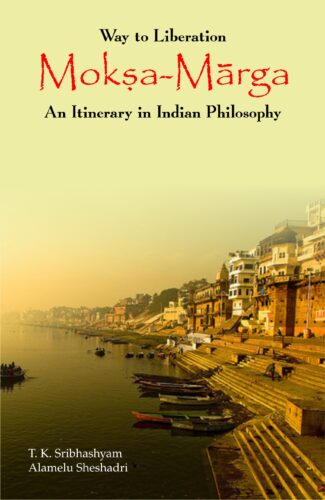
The book projects light on concept of contemplation and meditation, including meditation techniques and practices, which is central to the attainment of moksha. It also explains meaning of love, devotion, religion, the body-soul relation and the three yogas understanding of which is essential to attain moksha.
The way to liberation or moksha needs perfect knowledge, perfect action and perfect surrender to the Lord. The bhakta becomes a bhagavata as he not only knows and sees but also lives as a servant of God. Moksha is the final approach to the purity and perfection of the human soul. This volume attempts an in-depth study of the concept of liberation or moksha and the way to attain it.
The book begins with the meaning of love, devotion, religion, the body-soul relation and the three yogas, an understanding of which is essential to understand the concept of moksha. In this context, it delves into the meaning of the Brahman, the Absolute, as conveyed in the Vedas and other religious works like the Upanishads and the Bhagavad-Gita, the concept of the universal spiritual entity of Sarveshvara, concepts of sin and virtue, and even the principles of monotheism and polytheism in Hinduism. Quoting from the scriptures and other relevant texts, it emphasises on the notion of devotion and its benefits to examine the means to self-realisation and liberation and includes a study of the concept of contemplation and meditation, including meditation techniques and practices, which is central to the attainment of moksha.
With interesting illustrations, the volume will be useful to religious scholars and students and seekers on the path of spiritual fulfilment.

The book projects light on concept of contemplation and meditation, including meditation techniques and practices, which is central to the attainment of moksha. It also explains meaning of love, devotion, religion, the body-soul relation and the three yogas understanding of which is essential to attain moksha.
The way to liberation or moksha needs perfect knowledge, perfect action and perfect surrender to the Lord. The bhakta becomes a bhagavata as he not only knows and sees but also lives as a servant of God. Moksha is the final approach to the purity and perfection of the human soul. This volume attempts an in-depth study of the concept of liberation or moksha and the way to attain it.
The book begins with the meaning of love, devotion, religion, the body-soul relation and the three yogas, an understanding of which is essential to understand the concept of moksha. In this context, it delves into the meaning of the Brahman, the Absolute, as conveyed in the Vedas and other religious works like the Upanishads and the Bhagavad-Gita, the concept of the universal spiritual entity of Sarveshvara, concepts of sin and virtue, and even the principles of monotheism and polytheism in Hinduism. Quoting from the scriptures and other relevant texts, it emphasises on the notion of devotion and its benefits to examine the means to self-realisation and liberation and includes a study of the concept of contemplation and meditation, including meditation techniques and practices, which is central to the attainment of moksha.
With interesting illustrations, the volume will be useful to religious scholars and students and seekers on the path of spiritual fulfilment.

How can we understand the Hindu tradition as alive today? That is the question which this book investigates. It asks for a broader understanding of history, rightful accounting of the Vedas and of other oral learnings. The goal of truth is sought by approaching different personalities and institutions of culture.
In India, there has long been a tendency to emphasize the spoken word which is passed on alive from an individual teacher to each individual student. But, through the development of modern media, more use is now made of the written word which records information externally, in institutions that have been industrially, socially and culturally organized. How then can we understand the Hindu tradition as alive today with its ancient emphasis upon the spoken word and the living individual? That is the question which this book investigates. Accordingly, it asks for a broader understanding of history, which would allow for a rightful accounting of the Vedas and of other oral learning. Through its continued emphasis upon the living word, the Hindu tradition asks for a deeper understanding of reasoned enquiry. Such reasons do not work primarily through mechanical instruments in the restricted way that modern physics does. Instead, it works essentially through a reflective investigation of our living faculties, which are thus cultivated and clarified. The goal of truth is not here sought through an institutional consensus; but rather as a common ground, which is approached quite differently through different personalities and institutions of culture.

How can we understand the Hindu tradition as alive today? That is the question which this book investigates. It asks for a broader understanding of history, rightful accounting of the Vedas and of other oral learnings. The goal of truth is sought by approaching different personalities and institutions of culture.
In India, there has long been a tendency to emphasize the spoken word which is passed on alive from an individual teacher to each individual student. But, through the development of modern media, more use is now made of the written word which records information externally, in institutions that have been industrially, socially and culturally organized. How then can we understand the Hindu tradition as alive today with its ancient emphasis upon the spoken word and the living individual? That is the question which this book investigates. Accordingly, it asks for a broader understanding of history, which would allow for a rightful accounting of the Vedas and of other oral learning. Through its continued emphasis upon the living word, the Hindu tradition asks for a deeper understanding of reasoned enquiry. Such reasons do not work primarily through mechanical instruments in the restricted way that modern physics does. Instead, it works essentially through a reflective investigation of our living faculties, which are thus cultivated and clarified. The goal of truth is not here sought through an institutional consensus; but rather as a common ground, which is approached quite differently through different personalities and institutions of culture.
| There are no products |